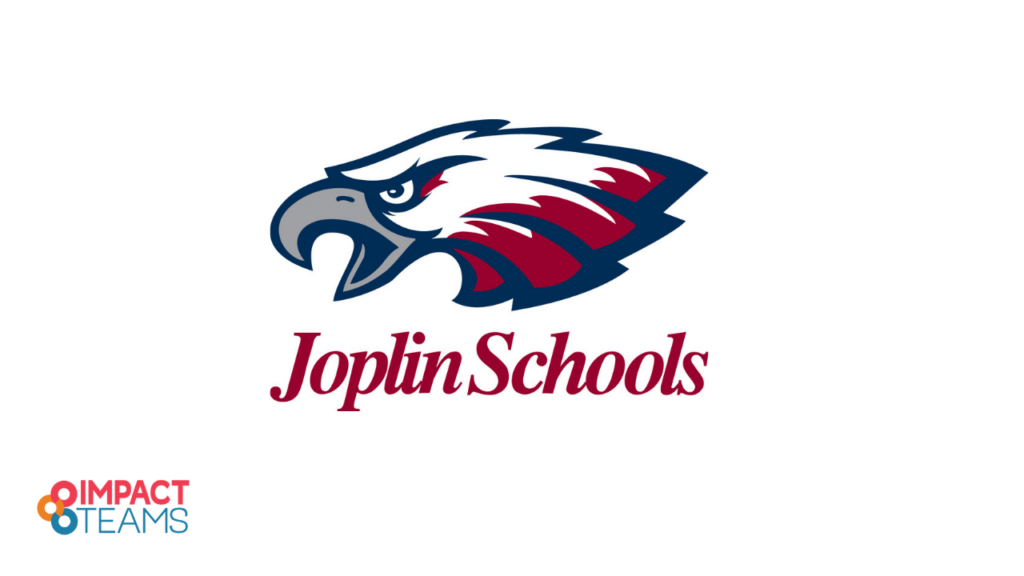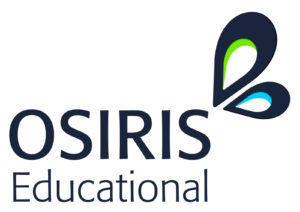CASE STUDY
Joplin Schools – Impact Teams

Joplin is an urban/suburban community that spans 70 miles and is located in the southwest corner of Missouri. The Joplin School district serves around 7,600 students PK–12. There are 11 elementary schools, 3 middle schools, one high school and trade school, and one early childhood center.
Of the 1286 employees, 718 are certified staff; 49% of the certified staff hold a master’s degree or higher.
Demographics
• Number of teachers 718
• Number of students 7600
• Percentage of students on free/reduced
lunch 61%
• Percentage of limited English profi cient
students 3%
• Percentage of special ed students: 15%
• Any other relevant data: Average teacher
experience is 10 years
The Challenge
In 2011, the city of Joplin was hit with an F5 tornado that was close to 1 mile wide and was on the ground for 13 miles, destroying 6 schools, hundreds of homes and businesses, and resulted in 161 lives being lost. It was the deadliest tornado in the USA since 1947 and resulted in being the most costly tornado recorded in U.S. history. As a result, people and businesses from all over the world generously responded to aide in the recovery of the community and in the Joplin Schools system. As the district began to rebuild, the Board of Education, administration, and the community committed to think in innovative ways and not just rebuild what had previously been. A team of district administrators, community members, parents, educators, and students decided to design schools to be collaborative, to have flexible spaces, and to engage students in learning anytime, anywhere. Innovation did not stop with just the bricks and mortar. For example, Instead of textbooks, the decision was made to go 1:1 with Macbooks at the high school and focus on using open-ed resources to empower all learners to engage in college and career readiness and foster a passion for learning to become responsible and innovative citizens.
Implementation
In order to place students at the center for learning, we knew that we needed a scalable plan that could start in English Language Arts, and that could also be replicated for other content areas in the future. It was important to emphasise that this was not a program, but a process. As our focus on student-centered learning took shape, we focused on working with Impact Teams in three key areas:
• Instructional Leadership
• Teacher Clarity
• Student Voice
Cohorts of principals, instructional coaches, and teacher leaders developed a phased implementation plan that allowed for differentiation based on the professional learning needs at different sites while maintaining the core for Impact Teams. Implementing the formative assessment process in all classrooms would shift the environment to be ensure self-regulated learning.
Results
Dr. Norm Ridder, superintendent of the Joplin School District explaining district progress on state assessment results using the Impact Team Model.
Joplin showed improvement for the third consecutive year, earning 86.8 percent of the total possible points in 2015, as compared with 78.6 percent of total points in 2013 on the state’s school improvement formula. (The percentage of points earned is based on five key areas: academic achievement, subgroup academic achievement, college and career readiness, attendance, and graduation rate.)
“We can rest assured that we are seeing improvement, and now it’s just strengthening that, and it’s going to be exciting to see where we go from here” interim Superintendent Norm Ridder said.

